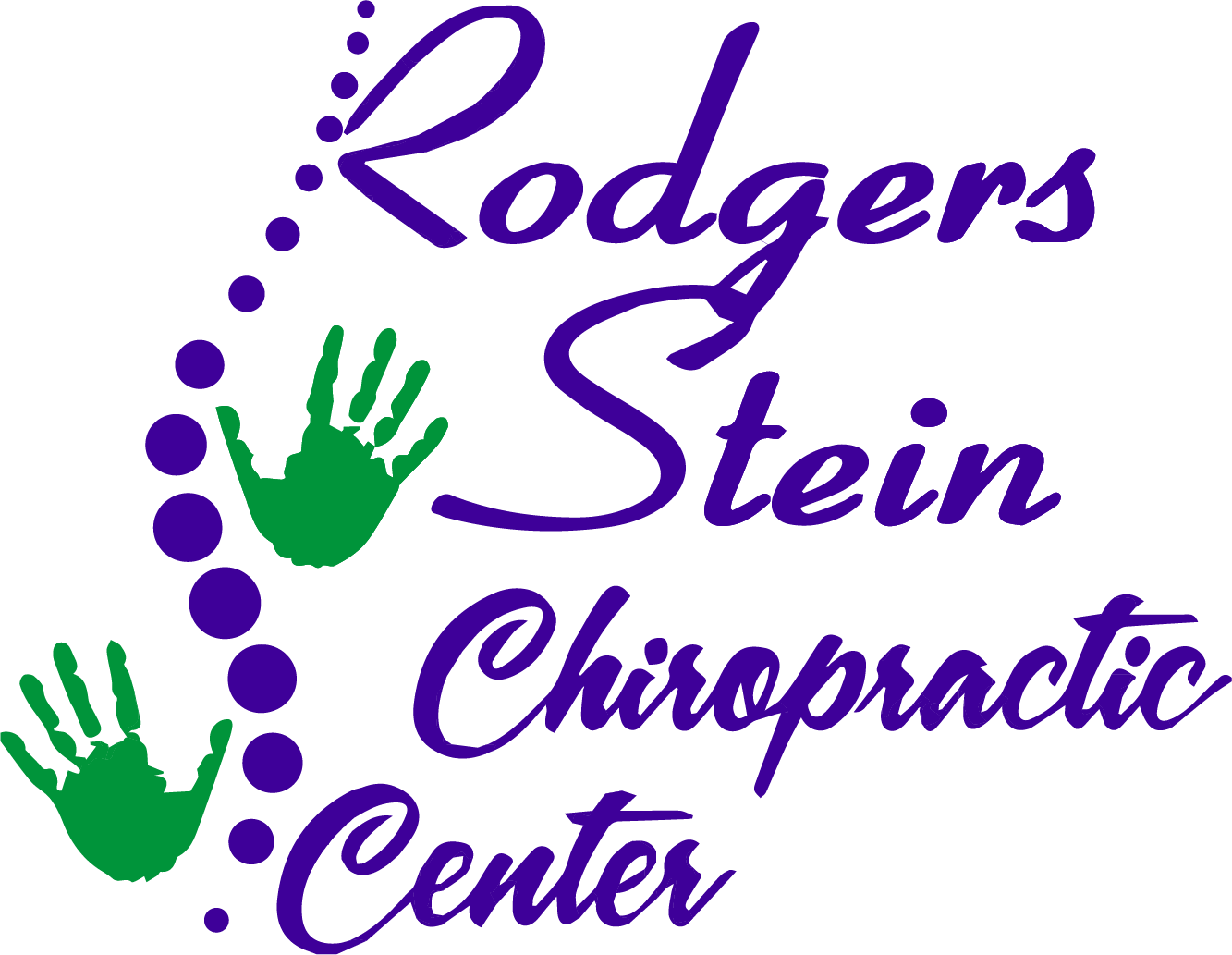When you consider back pain, it's clear that a one-size-fits-all approach often falls short. Personalized plans can make a significant difference by addressing your unique challenges, whether they're related to lifestyle, specific pain triggers, or underlying health issues. Tailoring treatment not only targets the root causes but can also enhance your overall recovery experience. But what exactly does that personalization look like in practice, and how can it specifically help you manage your pain more effectively?
Understanding Back Pain Causes
Back pain can stem from a variety of causes, making it vital to understand what might be impacting your body. You might experience discomfort due to muscle strain, which often happens when you lift something heavy or twist awkwardly. This can lead to soreness that lingers, especially if you don't allow your muscles to recover properly.
Additionally, poor posture, whether at your desk or while sleeping, can contribute considerably to back pain. If your spine isn't aligned correctly, you're putting unnecessary pressure on certain areas, causing discomfort.
Another common cause is injury, whether from sports, accidents, or even falls. These incidents can lead to herniated discs or fractures, which can be quite painful.
You may also find that stress plays a role in your back pain. When you're stressed, your body tenses up, which can cause tightness and discomfort in your back.
As you age, degenerative conditions like arthritis or spinal stenosis can also contribute to chronic pain. It's essential to pay attention to how your body feels and any changes over time.
Even lifestyle factors, such as being overweight or leading a sedentary life, can exacerbate your condition. Understanding these causes helps you identify patterns and triggers, allowing you to take proactive steps toward relief.
The Importance of Personalization
Personalized approaches to back pain management can greatly enhance your recovery journey. Everyone's experience with back pain is unique, influenced by various factors such as lifestyle, physical condition, and emotional well-being. When you tailor your treatment plan to fit your specific needs, you're more likely to see effective results.
Personalization allows you to focus on what truly matters for your body. Instead of following a one-size-fits-all approach, you can incorporate strategies that resonate with your individual circumstances. For instance, if you're more active, a plan that emphasizes physical therapy and exercise might be more beneficial. Conversely, if your lifestyle involves prolonged sitting, adjustments to your workspace and posture may hold the key to alleviating your pain.
Moreover, personalized plans encourage you to engage more actively in your recovery. When you see that your plan directly addresses your specific challenges, you're likely to feel more motivated and committed to following through. This engagement fosters a sense of empowerment, making you an active participant in your healing process rather than a passive recipient of generic treatments.
In essence, embracing personalization in your back pain management means recognizing that your body is distinct. By focusing on your individual needs, you're not just treating the symptoms; you're addressing the underlying issues that contribute to your pain. This approach can lead to better outcomes and a more fulfilling journey toward recovery.
Assessing Your Unique Needs
Understanding your unique needs is the first step in creating an effective back pain management plan. Each person's experience with back pain is different, influenced by factors such as lifestyle, physical condition, and emotional health.
To tailor a plan that works for you, start by identifying the specific characteristics of your pain. Is it sharp, dull, or constant? Does it radiate to other areas, like your legs or hips? Noting these details can help pinpoint the underlying issues.
Next, consider your daily activities and how they might contribute to your discomfort. Do you spend long hours sitting at a desk? Are you engaged in heavy lifting or repetitive motions? Recognizing these patterns allows you to address the root causes of your pain rather than just treating the symptoms.
Don't forget to evaluate your overall health. Are there existing medical conditions or previous injuries that might complicate your situation? Keep in mind that stress and emotional well-being can also play a role in how you perceive and cope with pain.
Finally, think about your goals for relief. Do you want to return to a specific activity, like running or playing with your kids? Establishing clear objectives will help guide your personalized plan.
Customized Exercise Regimens
Creating a customized exercise regimen is essential for effectively managing back pain. Everyone's body responds differently to movement, so tailoring exercises to your specific needs can help alleviate discomfort and improve mobility. Start by consulting with a healthcare provider or physical therapist who can assess your condition and recommend exercises suited to your limitations and goals.
Begin with gentle stretching exercises to enhance flexibility and reduce tension in your back muscles. Incorporate movements that focus on strengthening your core, as a strong core provides vital support for your spine. Planks, bridges, and pelvic tilts are excellent choices that engage multiple muscle groups.
As you progress, consider adding low-impact aerobic exercises, like walking or swimming, to improve circulation and overall fitness without putting too much strain on your back. These activities can also help you maintain a healthy weight, which is significant in reducing stress on your spine.
Consistency is key, so aim to incorporate your customized exercises into your daily routine. Listen to your body; if an exercise causes pain, modify it or consult your healthcare provider for alternatives.
Gradually increase the intensity and duration of your workouts as your strength and flexibility improve.
Nutrition's Role in Pain Relief
A well-rounded approach to managing back pain includes not just exercise but also nutrition. What you eat can greatly influence your body's inflammation levels, which directly affects pain perception. By choosing anti-inflammatory foods, you can help reduce the discomfort associated with back pain.
Start by incorporating fruits and vegetables rich in antioxidants, like berries, spinach, and broccoli. These foods fight oxidative stress and inflammation in your body. Additionally, consider adding healthy fats, such as those found in avocados, nuts, and olive oil. Omega-3 fatty acids, found in fatty fish like salmon, have been shown to lower inflammation and may help alleviate pain.
Don't forget about the importance of hydration. Staying well-hydrated keeps your muscles and joints functioning efficiently, which can contribute to overall back health. Aim for at least eight glasses of water a day, and more if you're active.
On the flip side, it's wise to limit foods that can trigger inflammation. Processed sugars, refined carbs, and trans fats can exacerbate pain and discomfort, so try to minimize these in your diet. Instead, focus on whole, nutrient-dense foods that support your body's healing processes.
Lastly, consider consulting a nutritionist to tailor a diet plan specifically for your needs. By combining mindful eating with your exercise regimen, you're taking a proactive step towards managing your back pain more effectively. Your body will thank you!
Physical Therapy Tailored for You
When it comes to physical therapy, a personalized approach can make all the difference in your recovery.
You'll start with an individualized assessment that focuses on your specific needs, followed by customized treatment techniques designed just for you.
Plus, regular progress tracking guarantees you're moving in the right direction toward relief.
Individualized Assessment Process
The individualized assessment process is essential for developing a personalized physical therapy plan that effectively addresses your specific back pain. During this process, your therapist will gather detailed information about your medical history, lifestyle, and the nature of your pain. You'll discuss when your pain started, what activities exacerbate it, and any previous treatments you've tried.
Next, your therapist will perform a thorough physical examination. They'll evaluate your posture, flexibility, strength, and range of motion. This hands-on assessment helps pinpoint the exact areas contributing to your discomfort. By observing how you move and identifying any imbalances, your therapist can better understand your unique situation.
After gathering this information, your therapist will analyze the data to identify patterns and potential underlying issues. This deep understanding allows them to create a tailored plan that not only targets your pain but also addresses the root causes.
You'll also have the opportunity to ask questions and share your goals, ensuring your plan aligns with your lifestyle. This collaborative approach sets the foundation for effective treatment, empowering you to take control of your recovery journey.
Customized Treatment Techniques
After your personalized assessment, your therapist will develop customized treatment techniques that directly address your back pain. These techniques are designed to fit your unique needs, taking into account your specific pain triggers, lifestyle, and goals.
Your therapist may incorporate a variety of methods, including targeted exercises, manual therapy, and modalities like heat or ice therapy.
You'll engage in exercises tailored to strengthen your core and improve flexibility, which can greatly reduce strain on your back. Manual therapy techniques might involve hands-on manipulation to relieve tension and improve mobility.
Your therapist may also teach you ergonomic practices to adopt in your daily life, helping you maintain proper posture and reduce the risk of future injuries.
As you progress, your therapist will adjust these techniques to guarantee maximum effectiveness. This dynamic approach allows for continual improvement and keeps you motivated.
Progress Tracking Methods
Effective progress tracking methods are essential for ensuring your personalized back pain treatment is on the right path. By monitoring your progress, you can identify what's working and what needs adjustment in your therapy plan. Start by keeping a daily journal, noting your pain levels, activities, and any changes you experience. This log serves as a useful tool for both you and your therapist to recognize patterns and make informed decisions.
Next, utilize objective measures like range of motion tests and strength assessments. These assessments help you see tangible improvements over time, encouraging you to stay committed to your program. Regular check-ins with your physical therapist can also provide valuable insights. They can review your journal and assessments, guiding you on necessary modifications.
Lastly, consider using mobile apps that track exercise routines and pain levels. These apps often offer reminders and visual progress charts, making it easier to stay engaged.
Mindfulness and Stress Management
Mindfulness and stress management play essential roles in alleviating back pain. When you incorporate these practices into your daily routine, you can't only reduce your pain but also improve your overall well-being.
It's important to recognize how stress and tension can manifest physically, particularly in your back. By becoming more aware of your body and practicing mindfulness, you can learn to release that tension.
Here are three effective strategies to help you manage stress and embrace mindfulness:
- Deep Breathing Exercises: Take a few minutes each day to focus on your breath. Inhale deeply through your nose, allowing your abdomen to expand, and then exhale slowly through your mouth. This simple practice can help calm your mind and reduce muscle tension.
- Mindful Movement: Engage in gentle activities like yoga or tai chi. These practices not only promote flexibility and strength but also encourage a mindful connection between your body and mind. Being present in your movements can help you become more aware of how stress affects your body.
- Journaling: Spend a few minutes each day writing about your thoughts and feelings. This can help you identify sources of stress and process your emotions. By putting pen to paper, you can gain clarity and perspective, which can also reduce feelings of anxiety related to your back pain.
Ongoing Monitoring and Adjustments
To effectively manage your back pain, ongoing monitoring is crucial.
By tracking your progress in real-time, you can adjust treatment strategies as needed and stay in close communication with your healthcare team.
This proactive approach guarantees that your personalized plan evolves with your changing needs.
Real-time Progress Tracking
How can you assure that your personalized plan for back pain remains effective over time? The key lies in real-time progress tracking. By continuously monitoring your progress, you can identify what's working and what needs adjustment. This proactive approach guarantees that your treatment evolves alongside your changing needs.
Here are three benefits of real-time progress tracking:
- Immediate Feedback: You'll receive instant insights into your pain levels and mobility, allowing you to address issues before they escalate.
- Data-Driven Decisions: By analyzing your progress, you can make informed choices about modifications to your exercise or therapy routines, assuring they stay aligned with your recovery goals.
- Motivation and Accountability: Tracking your progress keeps you motivated and accountable. Seeing tangible results can boost your commitment to the plan, reinforcing positive behaviors.
Incorporating real-time progress tracking into your personalized plan not only enhances its effectiveness but also empowers you to take charge of your recovery.
Adaptive Treatment Strategies
Adaptive treatment strategies are essential for ensuring your personalized back pain plan remains effective as your body responds to therapy. These strategies involve ongoing monitoring of your progress and making necessary adjustments to your treatment based on how you're feeling.
You might notice that certain exercises or therapies yield better results over time, while others may need to be modified or replaced. Regularly evaluating your pain levels, mobility, and overall well-being helps you and your healthcare provider pinpoint what's working and what isn't.
For instance, if you find certain stretches are too strenuous or not providing relief, you can discuss alternatives that suit your current condition. Staying proactive in this way can lead to quicker improvements and a more comfortable experience.
Flexibility is key; your needs may change based on factors like activity levels, stress, or even seasonal changes. By adapting your treatment plan as needed, you can maintain momentum toward recovery and avoid plateaus in your healing journey.
This proactive approach empowers you to take charge of your back pain management, ensuring you're always on the path to better health.
Continuous Communication Channels
Regularly maintaining open communication with your healthcare provider is essential for effective back pain management. This ongoing dialogue helps you stay informed about your treatment plan and allows for necessary adjustments based on your progress.
It's important to utilize various communication channels to guarantee you're always on the same page with your provider.
Here are three key benefits of continuous communication:
- Real-Time Feedback: You can share any changes in your symptoms immediately, allowing your healthcare provider to make timely adjustments to your treatment plan.
- Enhanced Motivation: Regular check-ins can boost your commitment to your personalized plan, as you'll receive encouragement and support, making the journey feel less isolating.
- Tailored Adjustments: As your condition evolves, ongoing communication guarantees that your treatment stays aligned with your specific needs, optimizing your recovery process.
Success Stories and Testimonials
Many individuals have transformed their lives through personalized plans for back pain, and their success stories highlight the effectiveness of tailored approaches.
You might find inspiration in the journey of Sarah, who struggled with chronic discomfort for years. After starting a personalized plan that included specific exercises and lifestyle modifications, she experienced significant relief within weeks. Sarah now enjoys activities she once thought she'd never do again, like hiking and playing with her kids.
Then there's Mike, who was skeptical at first. He tried various treatments with little success until he committed to a customized plan that addressed his unique needs. He focused on strengthening his core and improving his posture, and within a few months, he was back to playing his favorite sports without pain. Mike's story shows how investing in a personalized approach can lead to unexpected breakthroughs.
You may also resonate with Lisa, who found that her emotional well-being played a vital role in her recovery. By incorporating mindfulness practices alongside physical therapy tailored to her back issues, she not only alleviated her pain but also improved her overall mental health.
These success stories demonstrate that a one-size-fits-all solution often falls short. When you tailor your approach to your specific needs, you can experience remarkable changes.
Whether it's through targeted exercises, lifestyle adjustments, or a combination of both, many have found that personalized plans are the key to overcoming back pain and reclaiming their lives.
Finding the Right Specialist
When you're dealing with back pain, finding the right specialist is essential to your recovery.
Start by evaluating your condition and exploring treatment options that fit your needs.
Then, review the credentials of potential specialists to guarantee you're in capable hands.
Assessing Your Condition
Finding the right specialist for your back pain can feel overwhelming, but it's an essential step toward effective treatment. You need someone who understands your unique condition and can tailor a plan that works for you. Start by evaluating your symptoms and concerns. This will help you communicate clearly with potential specialists.
Consider these three key factors when searching for the right expert:
- Qualifications: Check that the specialist has the necessary certifications and experience in treating back pain. Look for someone who specializes in your specific issue, whether it's a herniated disc, sciatica, or muscle strain.
- Approach: Different specialists use various methods. Some may focus on physical therapy, while others might lean toward surgical options. Confirm their approach aligns with your preferences and comfort level.
- Reviews and Recommendations: Don't underestimate the power of patient reviews. Talk to friends or family who've dealt with similar issues, and read online testimonials to gauge a specialist's effectiveness.
Exploring Treatment Options
With a clearer understanding of your condition, it's time to explore the various treatment options available for back pain. You've got several paths to evaluate, and finding the right specialist is vital to effective relief.
Start by determining what type of treatment you think you might benefit from most. Options include physical therapy, chiropractic care, acupuncture, and pain management specialists, among others.
Physical therapists can guide you through exercises tailored to strengthen your back and improve flexibility. Chiropractors focus on spinal adjustments to alleviate pain and enhance mobility. Acupuncturists utilize needle placement to relieve discomfort and promote healing naturally. Pain management specialists often employ medication or interventional procedures to target specific pain sources.
As you explore these options, reflect on your specific needs and preferences. Do you prefer a hands-on approach, or are you inclined towards holistic methods?
Each specialist brings a unique set of skills to the table, so narrowing down your choices based on your comfort level and treatment goals will help you find the right fit.
Don't hesitate to ask questions or seek recommendations—your journey to relief starts with the right expert by your side.
Evaluating Specialist Credentials
Choosing the right specialist for your back pain is essential, and evaluating their credentials helps confirm you're in capable hands. When searching for a specialist, you want to make certain that you're working with someone who's qualified, experienced, and knowledgeable about your specific condition.
Here are three key factors to ponder when evaluating a specialist's credentials:
- Education and Training: Check where they completed their medical degree and any additional training in fields related to back pain, like orthopedics or physical therapy. A strong educational background is fundamental.
- Board Certifications: Look for board certifications in relevant specialties. Certifications indicate that the specialist has met rigorous standards and is up-to-date with the latest practices in their field.
- Experience and Reviews: Reflect on their years of experience treating back pain and read patient reviews. Positive feedback and a solid track record can provide insight into their effectiveness and approach.
Conclusion
To summarize, personalized plans for relieving back pain can make a significant difference in your recovery journey. By understanding your unique needs and tailoring treatments to address the root causes, you can experience lasting relief. Incorporating customized exercise regimens, proper nutrition, and mindfulness techniques guarantees a holistic approach to your pain management. Remember, ongoing monitoring and adjustments are key to success. Don't hesitate to seek the right specialist who can guide you on this path to better health and comfort.



